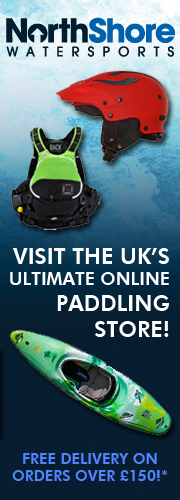Grade 1
Rivers with long, flat stretches of slowly moving water with occasional simple rapids, waves low, course easy to steer.
Use: Inland touring, instruction of novices and possibly racing and touring events. In flood conditions these sections are often high volume and the ‘normal’ characteristics are replaced by a much higher graded flow. Trees along the normal channel may create difficulties.
Grade 2
Fairly frequent rapids, usually with moderate regular waves or easy eddies.
Use: Touring for proficient canoeists. Moving water skills required. May be suitable for teaching such skills. White-water races and lower-division slalom competitions. In flood conditions the technical difficulty increases dramatically and the river may only be suitable for proficient canoeists. These sections have a steeper gradient and may include obstructions within the channel.
Grade 3
Rapids numerous with fairly high irregular waves, broken water, eddies and boils. Course not always recognisable. Inspection from the bank sometimes advisable.
Use: The proficient white-water canoeist will seek out this grade of water. Generally the grade is given because there are a series of steps which give relatively short stretches with a steep gradient. There will always be technical difficulty with steering and route choice, Suitable only for canoeists with well-developed skills. Used for training for advanced proficiency and white water competition, short stretches suitable for slalom competition, longer stretches for white-water racing. In flood the technical difficulties are often increased by the dramatic change in the water features: waves are higher; stoppers deeper and hold the canoe/kayak more easily.
Grade 4
Very difficult, long extended stretches of rapid with high irregular waves, difficult broken water, eddies and whirlpools – course often difficult to recognise.
Use: Sought by the committed white-water canoeist. Used for International slalom competition and white water racing. Generally the river will have a stepped profile, much of the grade will be because of the waterfalls or drops up to 3m high. The channel is often narrow and steep sided. It is often necessary both to inspect the section from the bank and prepare bank
support as a safety standby. Canoeists will not choose to swim in this grade of water if avoidable. Unlikely to be used for training. In flood some sections wash out, others will be one or even two grades higher.
Grade 5
Water features are similar to grade 4 but they are larger and less predictable. Course always very difficult to choose and will involve significant risk to the canoeist and equipment.
Use: These sections are usually relatively short and will always be inspected from the bank. There will always be a need for bank support for safety. In flood, if the section is not washed out, it may be considered too risky as even a moderate change in volume may alter the grade significantly. Only the most proficient canoeists, in small teams, will attempt this type of water. Not used for competition or events.
Grade 6
This is at the extreme limit of canoeing. Definite risk to life.
Use: These sections usually have a steep gradient or may be a single large fall. The section will usually be paddled when there is a low volume of water and there will always be significant bank support – often involving pre-placement of rescue lines.
The grading system have been used internationally for many years. However this system sometimes gives a distorted viewpoint and many top paddlers are now calling for the adoption of the Addison Scale which is prehaps more in-line with the way inwhich rock climbs are graded.



Leave a Reply